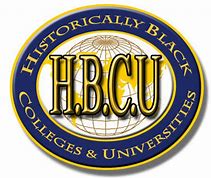Are people of color who play golf minorities? Since the intorduction of Minority Golf Magazine over 20 years ago, this has been a question asked by many of our readers. Perhaps this article will provide a little more clarity on the subject.
By Herschel Caldwell
 People of Color typically refer to people of African, Asian, Hispanic and/or Latino, and Native American heritage. It may also be used to refer to mixed-race people who have access to only a few editions of U.S. and local, golf-related publications. As of this writing, there is no other single publication, which deals directly with the issues germane to people of color in the United States and countries around the world where golf is an expanding economic force. Nor is there another publication that allows foreign readers to access information about people of color in other countries. Minority Golf Magazine responds to this global need for golf information, presented from a non-white perspective, and will be the first to provide these much-needed services to readers in countries with growing interest in golf.
People of Color typically refer to people of African, Asian, Hispanic and/or Latino, and Native American heritage. It may also be used to refer to mixed-race people who have access to only a few editions of U.S. and local, golf-related publications. As of this writing, there is no other single publication, which deals directly with the issues germane to people of color in the United States and countries around the world where golf is an expanding economic force. Nor is there another publication that allows foreign readers to access information about people of color in other countries. Minority Golf Magazine responds to this global need for golf information, presented from a non-white perspective, and will be the first to provide these much-needed services to readers in countries with growing interest in golf.
Person of color is a term used primarily in the United States to describe any person who is not white. The term is meant to be inclusive among non-white groups, emphasizing common experiences of racism. People of color was introduced as a preferable replacement to both non-white and minority, which are also inclusive, because it frames the subject positively; non-white defines people in terms of what they are not, and minority frequently carries a subordinate connotation. Style guides for writing from American Heritage, the Stanford Graduate School of Business, Mount Holyoke College, recommend the term over these alternatives.
[French minorité, from Medieval Latin min, from Latin minor, smaller]
Socially speaking, a minority is an ethnic, racial, religious, or other group having a distinctive presence within a larger society. Some people object to this term as negative or dismissive, and it should be avoided in contexts where a group’s status with regard to the majority population is irrelevant. Thus we would normally say a poem celebrating the diversity of cultures (not minorities) in America, where the emphasis is cultural as opposed to statistical or political. But in the appropriate context, as when discussing a group from a social or demographic point of view, minority is a useful term that need not be avoided as offensive. Minority Golf Magazine would not ever refer to Lee Trevino or Calvin Peete as first minorities chosen to represent America on the Ryder Cup Team or Tiger Woods as the first “minority” to win the Masters. However, when the word is used in the plural without a numeral or a quantifier like many or some—as in The firm announced plans to hire more minorities and women—the use of “minority” it becomes more acceptable. It is in this context that the word is understood as referring to the members of a group taken collectively rather than as individuals.
American Heritage® Dictionary of the English Language, Fifth Edition. Copyright © 2016 by Houghton Mifflin Harcourt Publishing Company. Published by Houghton Mifflin Harcourt Publishing Company. All rights reserved.


